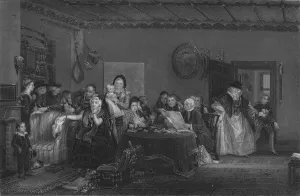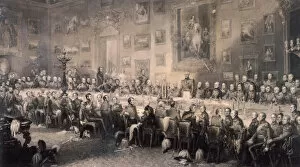William Greatbach Collection
William Greatbach was a talented artist who lived during the mid-19th century
All Professionally Made to Order for Quick Shipping
William Greatbach was a talented artist who lived during the mid-19th century. He created various captivating artworks, showcasing his artistic prowess and attention to detail. One of his notable works is "Blind Man's Buff, " painted in 1812. This piece captures the joy and excitement of children playing this classic game, highlighting Greatbach's ability to depict movement and emotion. In another masterpiece titled "Reading the Will, " created around 1820, Greatbach showcases his skill in capturing human expressions and interactions. The painting portrays a group gathered anxiously as they listen attentively to the reading of a will, leaving viewers curious about the outcome. Greatbach also ventured into portraiture with his depiction of Margaret Cavendish (nee Lucas), Duchess of Newcastle upon Tyne, circa 1846. Through intricate brushstrokes, he immortalizes her grace and elegance while providing insight into her personality. His talent extended beyond portraits; he also delved into historical scenes such as "Falstaff and His Friends" from Shakespeare's play "The Merry Wives of Windsor. " Painted in 1868, this artwork brings these iconic characters to life through vivid colors and expressive gestures. Apsley House in Westminster, London became another subject for Greatbach's artistry. In 1853, he captured its grandeur with meticulous attention to architectural details that transport viewers back to that era. "The First Day of Oysters, " painted by Greatbach in 1863, offers a glimpse into social customs during Victorian times. The artwork depicts people indulging in this culinary delight with enthusiasm while showcasing their fashionable attire. Greatbach had an eye for capturing social gatherings too. In "The Clubbists" from 1860s, he presents an engaging scene where individuals engage in lively discussions at a club meeting—an insightful portrayal reflecting societal norms during that period. Another fascinating work by him is "The First Ear Ring" from 1849.











